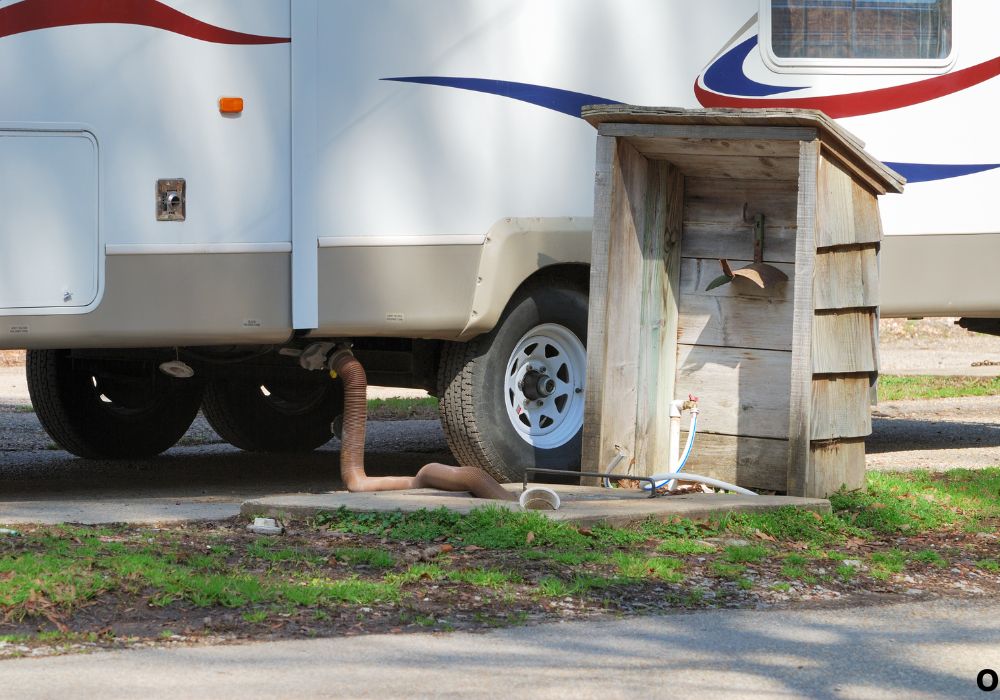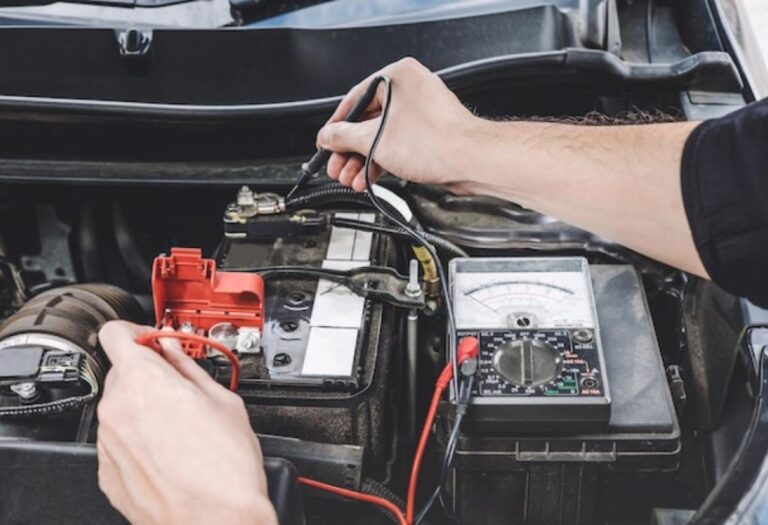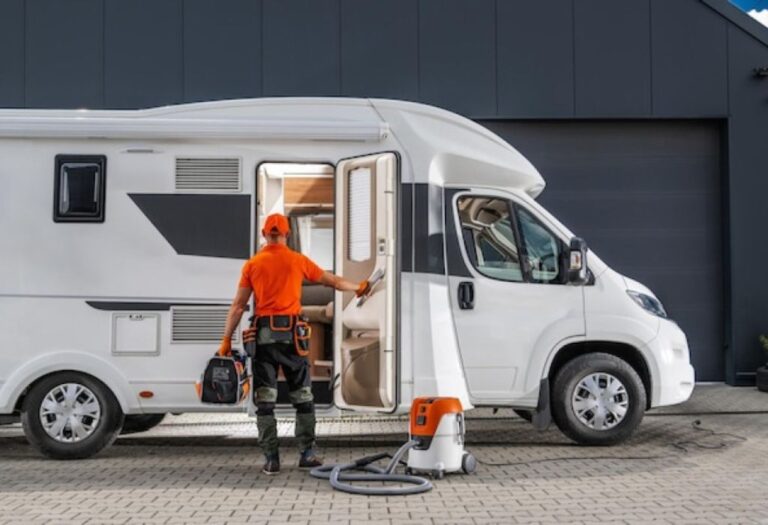Do RV Dump Stations Have Water Access for RVers
You pull up to an RV dump station after a long trip, ready to empty your tanks and refill before hitting the road again. The sewer hookup is obvious—but then you notice a nearby water spigot and pause for a moment: “Do RV dump stations have water?”
It’s a question every traveler asks sooner or later. While some dump stations offer convenient access to fresh (potable) water, others only provide non-potable water for rinsing hoses and cleaning up—and a few have no water service at all. Knowing which type of water is available before you arrive can make a big difference in how smoothly your trip goes.
In this guide, we’ll break down everything you need to know about water availability at RV dump stations—including the difference between potable and non-potable water, how to identify what’s safe to use, and what to do if the station doesn’t provide any water. Whether you’re a first-time RVer or a full-time traveler, this article will help you plan smarter stops and keep your water system clean and safe on every journey.
What Is an RV Dump Station?

An RV dump station is a designated facility where recreational vehicle owners can safely and legally empty their black water (toilet waste) and gray water (sink and shower waste) tanks. These stations are essential for maintaining hygiene and preventing environmental contamination while traveling off-grid or between campgrounds.
Most dump stations are found at campgrounds, rest areas, travel centers, or city service areas. They usually consist of:
- A sewer inlet connected to a municipal or septic system
- A concrete pad or drain area designed for easy hose access
- A rinse hose or water spigot (which may or may not supply potable water)
- Instruction signage outlining safe dumping practices
While the primary purpose of an RV dump station is waste disposal, some also provide additional amenities like water refill points, trash bins, and even air compressors. However, not all dump stations include these extras—especially water access.
Because facilities vary widely by location and management (city-owned, campground, or private), understanding how each dump station is equipped helps RVers plan ahead for both dumping and refilling. The next section will explain what kind of water availability you can expect at different types of dump stations.
Water Availability at RV Dump Stations: What to Expect
Not every RV dump station provides water — and those that do, vary in type and purpose. Generally, dump stations fall into three main categories based on water availability:
1. Dump Stations With Potable Water
Some stations, especially at campgrounds or full-service RV parks, provide potable (safe-to-drink) water. These are perfect for filling your fresh water tank after emptying your waste tanks. The potable water spigot is usually placed away from the sewer drain to avoid cross-contamination. It’s vital to use a dedicated potable water hose and never let it touch the dump hose or ground.
2. Dump Stations With Non-Potable Water
Most public dump stations, such as those at rest areas or municipal sites, offer non-potable water only. This water is not safe for drinking or filling your fresh tank but can be used to rinse your sewer hose, black tank, or concrete pad after dumping. It’s typically labeled with a clear warning: “Non-potable water—Do not drink.”
3. Dump Stations Without Any Water
Some budget or rural dump stations don’t offer any water access at all. These are “dry dump stations,” providing only a sewer inlet. You can still empty your tanks, but you’ll need to find another location to refill or rinse.
In short, never assume water will be available — and even when it is, confirm whether it’s potable before connecting a hose.
Potable vs. Non-Potable Water: Why It Matters

Understanding the difference between potable and non-potable water is critical to protecting your health and maintaining your RV’s plumbing system.
Potable Water
This is safe drinking water, treated and tested for bacteria, chemicals, and contaminants. You can use it for:
- Drinking and cooking
- Brushing teeth and washing dishes
- Filling your RV’s fresh water tank
Potable water spigots are usually labeled and often separated from the sewer area to prevent contamination. Always use a clean, food-grade hose reserved only for potable use.
Non-Potable Water
Non-potable water is not safe to drink. It’s often reclaimed, untreated, or sourced from nearby irrigation or utility lines. It’s meant for:
- Rinsing the sewer hose or black tank
- Cleaning the dump pad after use
Using non-potable water in your fresh tank can lead to bacterial growth, bad odors, or illness. Even if the water looks clean, it might carry contaminants invisible to the eye.
How to Check If Water Is Available at a Dump Station
Before heading to a dump station, you can easily verify if water is available — and what type — by following a few quick steps:
- Look for posted signage – Most stations label their spigots clearly as “Potable Water,” “Non-Potable,” or “No Water Available.”
- Check online listings or RV apps – Platforms like SaniDumps.com, Campendium, RV Life, and iOverlander list amenities, often specifying if potable water is offered.
- Call ahead – If you’re stopping at a campground, city facility, or travel plaza, a quick phone call can confirm the water situation.
- Inspect the setup – If the water source is close to the sewer drain, it’s almost always non-potable. Potable spigots are usually placed farther away for sanitation.
- Observe hose color and labeling – Blue or green hoses are often potable, while black or gray ones are not.
Taking a minute to verify before connecting your hose helps you avoid contamination and frustration.
Safe Usage Guidelines for Water at Dump Stations
Even when water is available, proper handling is essential to ensure cleanliness and safety — both for your RV and other users.
1. Use Separate Hoses
Keep two hoses:
- White/blue potable hose: for clean water only.
- Gray/black rinse hose: for flushing waste hoses and tanks.
Never mix or swap them.
2. Sanitize Frequently
After dumping, rinse and sanitize your hoses with a diluted bleach solution (1 tablespoon per gallon of water). Store them in separate sealed bins to prevent cross-contamination.
3. Keep the Hose Ends Off the Ground
Avoid letting the ends of your potable hose touch the dump station area or ground. If needed, use a hose stand or support.
4. Don’t Use Non-Potable Water for Fresh Tanks
Even in emergencies, resist filling your fresh water tank from an unlabeled or non-potable spigot. It can introduce bacteria and foul odors into your entire water system.
5. Let the Water Run for a Few Seconds First
Before filling your tank or rinsing, let the water run for 10–20 seconds to flush out any stagnant or contaminated water sitting in the pipe.
Following these basic hygiene and safety practices ensures your RV’s water system stays clean and safe for every trip.
Why Some Dump Stations Don’t Offer Water
While it might seem convenient for every RV dump station to have a water source, many locations intentionally exclude water access — and there are good reasons for it.
1. Cross-Contamination Risk
Dump stations are designed for waste disposal, not water distribution. Because sewer lines and water lines may run close to each other, there’s always a risk of cross-contamination. If the dump hose, spigot, or drainage system leaks, it could contaminate the local water supply — which is a major health and environmental hazard.
2. Cost and Maintenance Challenges
Installing and maintaining a reliable water system can be expensive. Municipalities and small campgrounds often avoid adding water service to dump stations to reduce maintenance costs, especially in cold climates where water lines can freeze and burst.
3. Misuse by Travelers
Unfortunately, some RVers have abused water access at dump stations — washing vehicles, wasting water, or leaving spigots running. This misuse leads operators to remove or restrict water service altogether.
4. Local Regulations and Environmental Codes
Certain counties and state parks prohibit water supply near sewer drains due to public health codes. These regulations ensure no accidental contamination occurs between potable water and waste disposal systems.
For these reasons, it’s always best to call ahead or check online listings before assuming that water will be available at your next dump stop.
Alternatives If There’s No Water at the Dump Station
If your dump station doesn’t offer any water — don’t panic. You still have several ways to refill your tanks or rinse your system safely.
1. RV Parks and Campgrounds
Most private and public RV parks offer potable water fill stations for a small fee, even if you’re not staying overnight. These are the safest and most convenient sources for drinking water.
2. City or County Water Fill Stations
Many towns operate bulk water fill stations, where you can buy potable water by the gallon. These are often located near public works departments or fire stations.
3. Portable Water Containers
Invest in portable water jugs or collapsible bladders (5–25 gallons) to carry backup potable water. They’re perfect for topping off your tank when a fill station isn’t nearby.
4. Gas Stations and Rest Areas
Some highway rest areas and truck stops provide potable water spigots near air stations or washing areas. Always confirm signage before use.
5. Plan Ahead Using Apps
Tools like iOverlander, Campendium, RV Life Trip Wizard, and AllStays can show where potable water is available near your route. Many listings include user photos and notes about water quality.
Having multiple refill options ensures you’re never stranded without clean water — even if your chosen dump station doesn’t provide it.
SumFrequently Asked Questions (FAQs) About RV Dump Station Water
1. Do all RV dump stations have water?
No. Many only have a sewer connection. Some provide non-potable rinse water, and others offer potable water at a separate spigot.
2. What’s the difference between potable and non-potable water?
Potable water is treated and safe to drink. Non-potable water is not safe for human use and should only be used for cleaning or rinsing equipment.
3. Can I fill my fresh water tank at a dump station?
Only if it’s clearly labeled “potable water” and located away from the sewer drain. Never fill from an unlabeled or nearby spigot.
4. How can I tell if the water is potable?
Look for clear labeling or ask a park attendant. Potable spigots are often capped, protected, and separated from waste areas.
5. Why do some dump stations have no water?
To reduce contamination risks, lower maintenance costs, or comply with local environmental codes.
6. What should I do if there’s only non-potable water available?
Use it only for rinsing hoses and tanks. For drinking water, visit a campground or a verified fill station nearby.
7. Is it safe to drink water at a dump station?
Only if it’s explicitly marked potable and uses a dedicated spigot far from the dump drain. When in doubt, avoid drinking it.
8. Can I use my own hose at a dump station?
Yes — and you should. Use separate hoses for potable and non-potable water, and sanitize them regularly.
9. Do dump stations have water in winter?
In many regions, water lines are shut off during freezing months to prevent pipe damage. Always check seasonal availability online.
10. Are there apps that show dump stations with water?
Yes — apps like AllStays, RV Life, and SaniDumps.com let you filter by stations with potable or non-potable water optionmary & Key Takeaways
- Not all RV dump stations provide water, and those that do often supply non-potable water for rinsing only.
- Always check signage and online listings before assuming water availability.
- Potable water (safe to drink) should be filled only from spigots labeled as such, ideally located away from the sewer area.
- Keep two separate hoses — one for clean water and one for waste rinsing — to prevent contamination.
- If no water is available, use campgrounds, portable containers, or city fill stations as safe alternatives.
- Planning ahead ensures you can empty and refill your tanks safely and efficiently during every RV trip.
A little preparation goes a long way in keeping your RV’s plumbing system clean, your water safe, and your journey stress-free.
I’m David R. Coleman, the founder, lead writer, and lifelong tool enthusiast behind GarageToolPro.com. With years of experience in automotive repair, woodworking, and home DIY projects, I created this platform to share practical tips, detailed tool reviews, and step-by-step guides that help mechanics, hobbyists, and homeowners get the job done right the first time.





